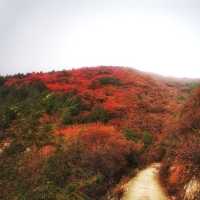Beautiful scenery, pleasant environment, I want to go next time
;
Guangji Temple Review
4.7 /5160 Reviews






5/5
Guangji Temple
Posted: Feb 20, 2021
Like
Popular Destinations
Warrington Travel | Toronto Travel | Hemel Hempstead Travel | Chongqing Travel | Birmingham Travel | Taipei Travel | Castellammare di Stabia Travel | Krakow Travel | Watford Travel | Southend-on-Sea Travel | Huddersfield Travel | Koh Samui Travel | Manila Travel | Workington Travel | Wigan Travel | Ksamil Travel | Canary Islands Travel | Kamakura Travel | Reading Travel | Cajeme Travel | Bridgewater Travel | La Jolla Travel | Suihua Travel | Moorea Travel | Minamiizu Travel | Huanggang Travel | Greensburg Travel | Otago Travel | Antigua Guatemala Travel
Recommended Attractions at Popular Destinations
Bangkok attraction near me | Tokyo attraction near me | Manila attraction near me | Hong Kong attraction near me | Seoul attraction near me | Taipei attraction near me | Los Angeles attraction near me | New York attraction near me | Shanghai attraction near me | Kuala Lumpur attraction near me | Shenzhen attraction near me | Osaka attraction near me | Singapore attraction near me | London attraction near me | Guangzhou attraction near me | San Francisco attraction near me | Beijing attraction near me | Macau attraction near me | Bali attraction near me | Paris attraction near me | Orlando attraction near me | Jakarta attraction near me | Ho Chi Minh City attraction near me | Chicago attraction near me | Phuket attraction near me | Toronto attraction near me | Dallas attraction near me | Istanbul attraction near me | Cebu attraction near me | Seattle attraction near me
Popular Attractions
Colosseum | Singapore Flyer | The Roman Baths | Ghibli Museum | Blenheim Palace | 2024 IU H.E.R. WORLD TOUR CONCERT IN HONG KONG | Warner Bros. Studio Tour Tokyo - The Making of Harry Potter | Penida Island | Disneyland Park | Sagrada Familia | Casa Batlló | Lion Monument | The Royal Yacht Britannia | Santa Maria Cathedral | Napa Sea(Yila Prairie) | Port El Kantaoui | Bumbastik | Bethuli Golf Club | Area di sgambamento cani Ravenna | Fatih Sultan Mehmet Cami Cami | Eleanor Island Bird Sanctuary | Panchleshwar Mahadev Mandir pachgaon | Yamashina Central Park | Hartbeespoort Dam Wall | Masjid Al A'la Indonesia Stock Exchange | Darussalam Great Mosque | Shrek's Adventure London | Ubud | Universal Studios Singapore | The Sanctuary of Truth
Popular Travelogues
Bangkok Travelogue | Tokyo Travelogue | Hong Kong Travelogue | Seoul Travelogue | Los Angeles Travelogue | New York Travelogue | Shanghai Travelogue | Kuala Lumpur Travelogue | Shenzhen Travelogue | Osaka Travelogue | Singapore Travelogue | London Travelogue | Guangzhou Travelogue | San Francisco Travelogue | Beijing Travelogue | Macau Travelogue | Bali Travelogue | Paris Travelogue | Ho Chi Minh City Travelogue | Chicago Travelogue | Phuket Travelogue | Toronto Travelogue
Payment Methods
Our Partners
Copyright © 2024 Trip.com Travel Singapore Pte. Ltd. All rights reserved
Site Operator: Trip.com Travel Singapore Pte. Ltd.
Site Operator: Trip.com Travel Singapore Pte. Ltd.




